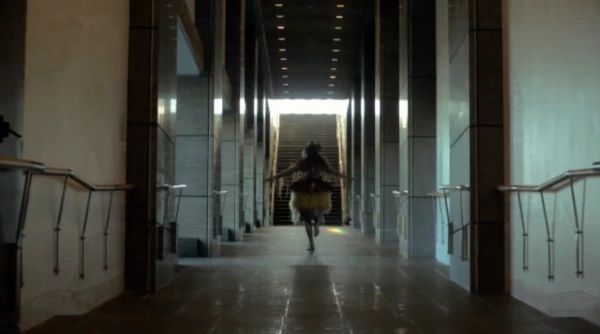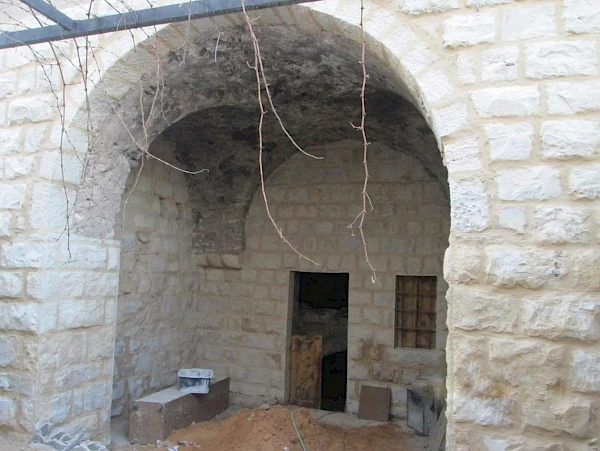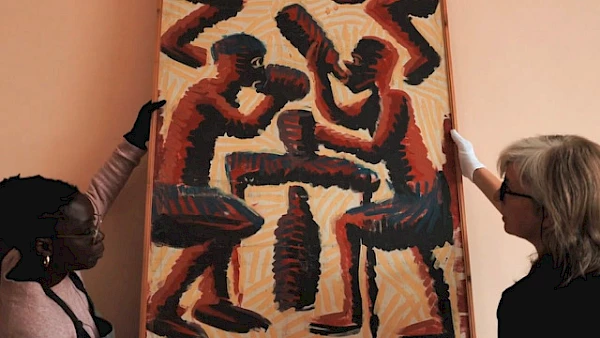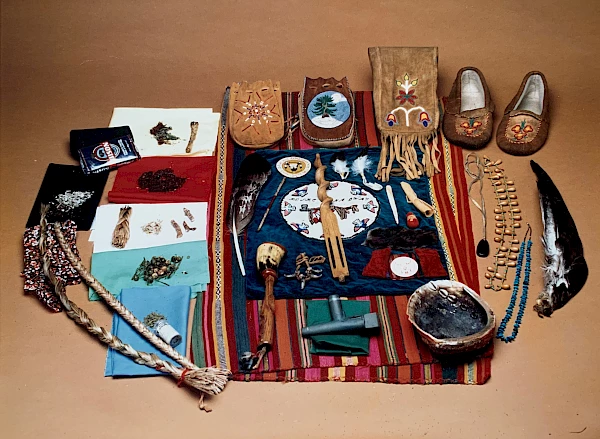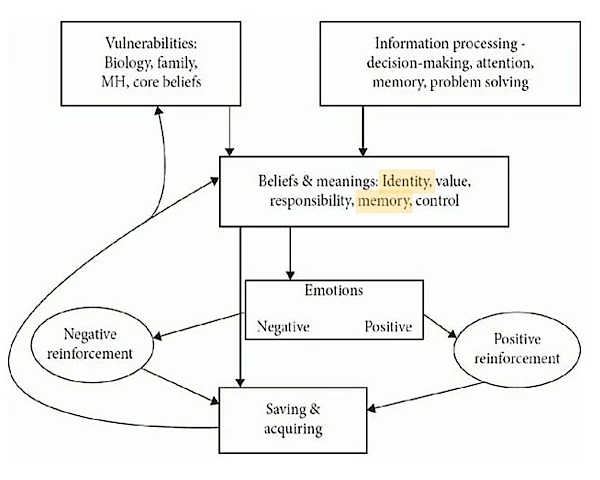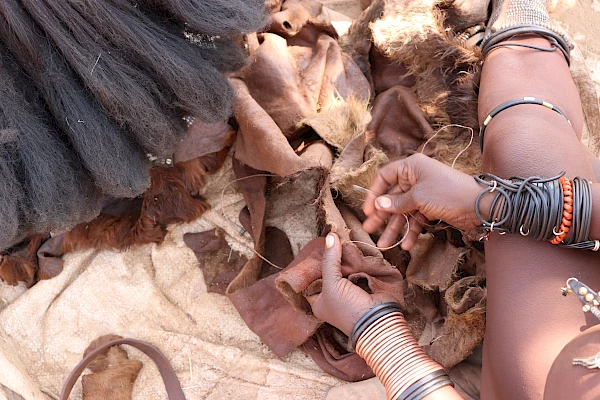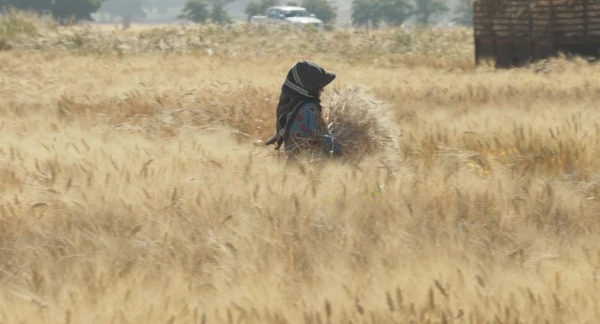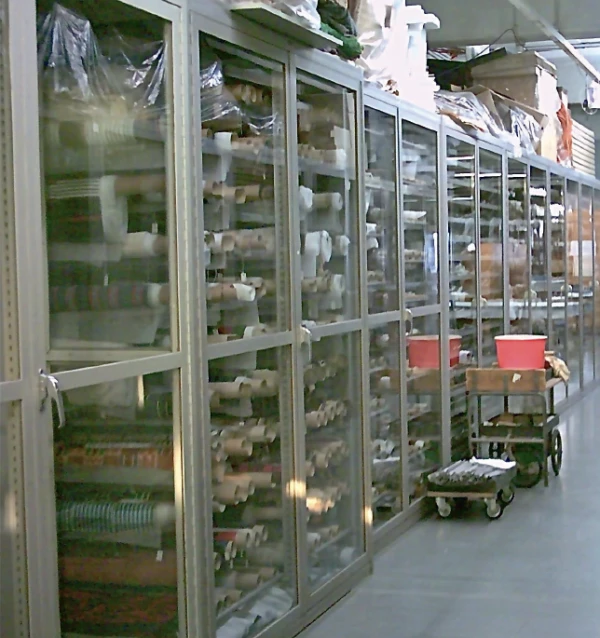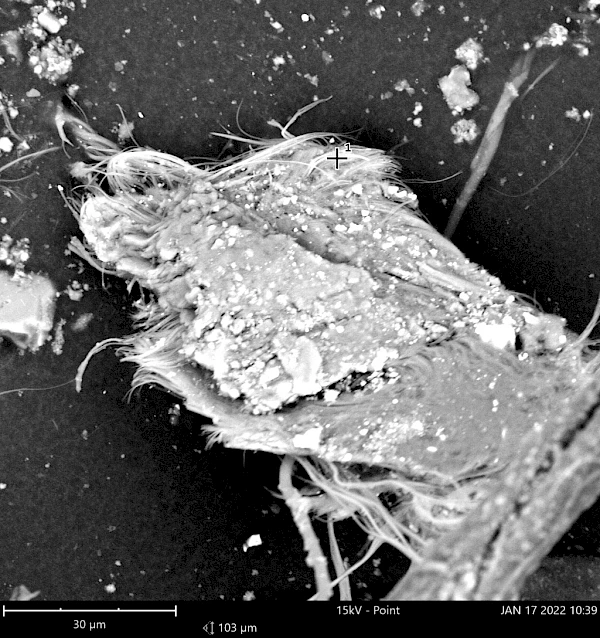Unruly agencies, reclaiming sovereignty, and transversal alliances
What we keep and how are eminently political questions: Nowadays, conservation refers primarily to a discipline practiced in Western museums and heritage institutions. But the wish to preserve material culture is not new nor limited to the West or the Global North. In fact, it existed well beyond Europe and its Enlightenment-based understandings of science. Thus, since the 1980’s, the field of conservation (understood as a field conceived in and exported from Europe and the USA across the world) has been redefined on a global scale. Artists, activists, museum professionals and scholars have put pressure on the understanding of conservation as a western science, imposed in the world through colonial forces and international organizations. The gendered and colonial dimensions of the discipline are tackled from different perspectives. Yet, these gratifying evolutions can not distract from the many persisting problems, such as the permanence of unequal, hierarchical power structures, decision-making by professionals without consultation with the people and groups concerned, tokenism (when individuals or a community are invited to participate but deprived of the power to decide), or the seizure and privatization of cultural goods.
In these times of profound division and politically fostered adversity, this issue foregrounds perspectives situated on the threshold of conservation, where alternative understandings and resistant approaches may survive or emerge. One of the central issues is not to separate the conservation techniques used in museums from the social conditions and realities of the societies to which the objects are related: As conservator and researcher Ayesha Fuentes pertinently writes: “The museum objects themselves often reveal the fragility of irreplaceable human cultures due to colonialism and the fragility of nature caused by unsustainable processes of extraction. [...] Museums and the public must engage in a larger conversation about preserving fragile heritage—and repairing humanity’s relationships with both natural resources and one another.”
Expanding our understanding of conservation
In many countries, conservation is today a profession structured around specific training, drawing on knowledge of historical, social, technical, physical, and chemical tools. In Europe and North America, for instance, museum conservators are highly specialized in evaluating the complexity of artworks, in their material and immaterial dimension. Yet the definition and understanding of conservation varies greatly between continents and contexts, but also within countries or institutions. Since the 2000’s, curators, scholars, artists, and activists have critically reconsidered (seemingly) purely technical conceptions of conservation and developed alternative views on their profession and its futures (Sully, 2008). Yet there is still a long way to go in order to develop socially responsible practices that account for the history of the European museum.
Conservation historians, academics and conservators, and more broadly institutions and universities, have been elaborating sophisticated theories on the topic. However, they remain complicit, more or less actively, in the (symbolic) violence that goes along with conservation. For instance, the preservation of constructed heritage frequently goes hand in hand with the expropriation of people for the aim of tourism, while substituting self-sustaining economies by wage-labor. As editors of this issue and white scholars working in Western academic institutions we are aware that our view of conservation is partial and limited. Whether we like it or not, we also participate in consolidating and conveying a conception of culture tainted by our situated and privileged experiences.
Prolonging this line of questioning, the research project Global Conservation (GloCo) led by Noémie Etienne at the university of Vienna, and funded by the European Union (European Research Council) aims to reconsider different histories and epistemologies of conservation – and by extension, care taking. Scholars, conservators and artists brought together by the project examine practices in Senegal, Cameroon, New Zealand, Thailand, Austria, and France. Moreover, postcolonial and ecological approaches have emphasized processes contesting Western hegemonic approaches and object centered understandings of conservation. Connecting cultural artifacts to users and stakeholders who are concerned by them while shifting the power structures involved in decision-making is key to these claims. From these perspectives, conditions of welcoming, rights to access, and creating a context that prioritizes the audiences concerned are an integral part of conservation work, as emphasized by conservators since the 1980s.
In parallel, conservators in the West have struggled in the past decades in order to obtain recognition of their work and valorize their social position. In this issue, a few researchers and contributors have examined these evolutions and their strong class and gender dimensions. Museum conservation, for instance, has evolved into a predominantly female field. Today, this situation raises multiple questions from professional equality to reproductive security. The strong demands for a professional revalorization of conservators’ work can be considered in parallel to claims for fair wages for care work, voiced by feminists in many contexts around the world. Globally, conservation professionals are striving for more sustainable and egalitarian practices. Recently, the notion of care has emerged at the forefront of multiple studies, connecting the private spaces and public structures, such as the hospital and the museum, while emphasizing the relationship between care and domination. Who cares for whom, and to whom these actions are beneficial? (Puig de la Bellacasa 2017, Ndikung, 2020).
Power relations have been ubiquitous in the field of restoration since its inception. At the turn of the 1800s, when French Napoleonic troops were seizing art and science objects all over Europe, they were brought to Paris and have been integrated into museums to huge publicity. In the beginning of the nineteenth century when some of these objects were returned to their countries of origin, their restitution was sometimes described as destructive (Savoy 2003 and 2011; Etienne 2012). Today, multiple museums, particularly in settler-colonial contexts, have aimed to integrate Indigenous knowledge into their practices in order to rebalance the power-dynamics and repair the damage made or perpetuated by the museums while they were engaged in “conservation”, “salvaging” and “protecting”. Yet these attempts encounter obstacles and adversities, or fail to shift the well established structures, as the contribution by the conservator and current Director of Repatriation and Indigenous Relations at the Canadian Museum of History in Gatineau John Moses underlines. As he, a member of the Delaware and Upper Mohawk bands of the Six Nations of the Grand River Territory near Brantford, Ontario, and fellow activists and professionals have advocated since the 1980’s the decolonization of conservation must go beyond declarations, and profoundly transform decision making processes, aim for reparation, establish social equity, and rethink the connections between people, land and artifacts.
The matter of conservation
On the material level, artifacts are always in process. They are the results of their multiple histories (Etienne 2013, 2018). Their materiality and immateriality are in constant transformation. Artworks are objects but also crossroads in perpetual evolution: materially, through interaction with their environments and over time, and culturally, through successive appropriations, reinterpretations and recontextualization. The activity of conservation (and time in general) continuously creates an object that is silently transforming – sometimes more visibly and quicker than others (by cracking, changes in shape or other physical transformations). Notions such as reversibility and visibility of changes are deontological principles for conservators, which predominate 20th-century conservation theories. The object is thus active and activated by a variety of interventions, microorganisms, humans, and other agents that transform it (see Beltrame 2017, deSilvey 2017, Dominguez Rubio 2020, Geismar/Otto/Warner 2022).
In this collection of essays, we examine these transformations – and what the attempts to stop them tell us about the networks between people, artworks, and places? By close examination of the relational webs that run through art and museums, rather than binary oppositions, multiple interconnections within “more than human” environments begin to appear and our bodies become spaces where multiple infra-agents actively transform us. As artist Aram Lee says in her conversation with Lotte Arndt about her film X-Hale: “Bodies are loci”.
This issue of Troubles dans les collections has a complementary publication in the journal Museums and Social Issues , dated 2023. Both began at an international conference at INHA Paris December 2022. The aim of the conference was to bring together professionals, theorists, and historians from different backgrounds to reconsider the nature of conservation beyond the dominant model of Western conservation. What does “conservation” mean in different contexts? We wanted to foster conversations between people engaging with practices capable of displacing and transforming the field. Among the speakers at the event were thinkers, curators, and artists Yaëlle Biro, Flavia Caviezel, Manuel Charpy, Fatima Fall Niang, Léonie Hénaut, Zahia Rahmani, Rosanna Raymond, and Chantal Umuhoza. The lectures, performances and round tables are available online.
Museums and Social Issues mainly invites contributions from museum colleagues, and people involved in conservation according to their practices and ways of thinking. It addresses the core of conservation and examines critical or alternative perspectives, and transformative approaches. This issue stays with the trouble, and explores the “threshold of conservation” and those experimental forms and practices that challenge our understanding of the field. The contributions acknowledge the lasting legacies of colonialism, shed light on spaces of disquiet and uncertainty, while opening up horizons for contestation and innovation. The issue is accordingly organized into three parts: Reversals, Restlessness, and Residues.
Reversals
The opening part of the issue foregrounds the work done by artists, museum professionals, and researchers striving to move beyond conservation and towards restorative justice, sovereignty, and dignity. They explore alternative models for conservation and transmission, beyond Western conservation practices and museums, and engage with contexts where dispossession, occupation and cultural assimilation policies are lasting conditions.
In her performative, filmic, and written work the artist and researcher Rosanna Raymond (Samoan) examines “conserVātion”, based on the concept of vā (a reciprocal and sustained relational space) that disrupts the museum as a site of the representation of objectified cultures removed from Indigenous people. From there, she inquires how museums and museum professionals in the Pacific and beyond take into account Indigenous modes of being when working with Moana artists and their material heritage. Raymond is part of the Pacific Sisters, a group of Pacific and Maori artists and performers that challenge Western hegemony and colonial continuities in culture. Describing museums as “imperial mausoleums where cultural belongings are suffocated and permanently entangled with violent colonial histories”, she recurs to the “vā as an embodied practice [...] to keep Moana cultural belongings acti.Vā.ted and connected to their Indigenous histories.”
For Troubles dans les collections, Raymond contributes a vidéo of her performance Glass Walls and Dark Seas that opened the Paris event in winter 2022. The performance is introduced by Ruby Satele Asiata herself of Pacific origin and currently preparing a PhD at Vienna University. Satele Asiata has been working with the Pacific collection at Tāmaki Paenga Hira Auckland War Memorial Museum for several years. She is currently investigating care methods aligning with Sāmoan ontology, cosmology, and practices.
The joint text by Mazen Iwaisi and Jamal Barghouth is programmatically titled: No State, no NGOs! Their focus on family museums in Palestine highlights these mostly independent small-scale places as structures that defend spaces of self-determination and memory that are better prepared to transmit the histories by those who inhabited these houses in the context of occupation than mostly urban, macro-funded institutions. The article focuses on families' experiences of preserving heritage independent of quasi-state apparatus like the Palestinian National Authority (PNA) and NGOs. It explores how families' commitment to protecting and managing cultural heritage can turn their houses into new spatiotemporal spaces. As family museums, they open up the possibilities to restore affection, knowledge, experience, living legacy, and can be a powerful tool for the preservation, rehabilitation and vindication of cultural heritage. As the authors argue, it is through the reclamation and epistemological accreditation of their agency that families are able to recover their silenced voices.
Conservation as an act of care anchored in her own, and the broader Black diasporic experience is the focus of Emmanuelle Nsunda’s piece tracing the author's trajectory, and her deep commitment to the conditions for workers and activists of African descent. She trained as a conservator-restorer in Belgium and founded the podcast Les absent.e.s and the online platform Afrofeminism in Progress. What multiple cultural dimensions and invisibilized genealogies might emerge if the care for Congolese painter’s Mwenze Kibwanga's Panel no. 8, created for the 1958 Colonial Exhibition in Brussels, had been carried out in an optic of supportive reconnections with the (deceased) artist and his conditions of conception? How to think about conservation not as the material stabilization of the object, but rather as the recuperation of the complex narrative that it carries? How can we take into account production under conditions of economic constraints, and the power asymmetries caused by the discrepancy between commissioners, collectors, and audiences based in Europe while the conception and artistic work is done on the African continent? How to adjust (in the double sense of adaptation and rectification) the narrative relating to the painted panel? Does the centering on transnational Black experiences allow the panel to resonate with quests for cultural reparation in the present?
To finish the section, we have translated John Moses' powerful keynote that he presented at the Divergent Conservation event at INHA mentioned before (the English version can be accessed in Contested Conservation. Museums and Social Issues 2023, 17(1) and 17(2)). Moses draws together ethical concerns, advocacy for Indigenous communities, and professional activity in institutions, based on his ample personal and professional experience. He presents a struggle that extends far beyond the museum. The author considers a program of restorative justice that would include the potential return of seized objects seized, the recognition of the suffering of children taken by force from their families by settler governments, and the restitution of land expropriated from its inhabitants. These traumas continue to affect Indigenous societies, and lead to premature deaths and social breakdown. As Moses demonstrates, decolonization is not a metaphor (Tuck & Yang, 2012). It is a claim for sovereignty and dignity that allows repressed narratives and epistemologies to emerge, and connects people to land, the living to the dead, practices to objects, places to space, and the past to the present.
Restlessness
Part two examines the museum as a troubled zone, a space of unrest, in constant tension. Here, collections are considered vulnerable not because of their intrinsic materiality, but because they have been extracted from the concerned communities and relocated into new spaces, such as museum galleries, conservation laboratories, and storage depots. The focus is thus extended to buildings and institutions. Like an artwork, the museum is a space composed of a multiplicity of people, infrastructures, and contingencies, and not a fixed and stable entity.
The question Rachel Moore asks is: What makes a museum a culturally accepted space? And why is it that amassing thousands of objects, sometimes of the same type, to create seriality and to control people, territories, and meaning is considered a legitimate cultural practice, when such concentration of materials is considered as pathological when practiced by individuals and treated as hoarding disorder? Examining how the pathology is treated and how it affects memory can provide insights into the museum’s relationship to tangible and intangible heritage. Moore stresses that Indigenous artifacts have been taken by force and accumulated in spaces that are not appropriate for them. Further, she explores traditional knowledge systems as examples of memory building based on her personal experiences and observations as a Hopi conservator in museum spaces. The Pueblo people of the Southwest have preserved their cultural identity despite historical injustices and trauma demonstrating a coping mechanism that focuses on cycles of knowledge over material permanence.
Based on fieldwork in Opuwo, Kaoko in the Kunene region, Namibia, Johanna Ndahekelekwa Nghishiko-Ndjamba’s article engages with the intersection of Indigenous knowledge with modern conservation methodologies. Focussing on the post-independence era starting in the 1990th, it investigates the significance of adopting culturally relevant conservation practices and challenges methods inherited from colonial times. The Ovahimba peoples’ vibrant traditions and artisanal expertise rely on leather for crafting clothing, jewelry, and tools. Using Indigenous practices passed down through generations, they have developed innovative techniques for tanning and maintaining leather artifacts. The text shows the connection between the Ovahimba community's ecological wisdom and their conservation practices. It focuses on their ingenious use of locally sourced materials and sustainable approaches, demonstrating the potential of Indigenous knowledge, sometimes used alongside classical museum conservation, in safeguarding cultural-heritage collections.
Accompanying her film Wild Relatives (2017) Jumana Manna’s text A Small Big Thing engages with preservation and conservation in the longue durée: Across geography and time, she weaves threads from the herbarium and its constitution by European botanists in the context of 18 and 19 century colonization and the classification of nature to present day seed banks in the Levant (Syria and Lebanon) and a gene bank with encyclopedic ambitions in the frozen soils of Norway (encountering currently unexpected transformations by migrating plants in the contexts of climate deregulation). In the context of our issue, her work highlights a paradox that underlies museum conservation of so-called ethnological collections, natural history collections and classified organic material kept in museums, laboratories or “banks”. As she writes on the ambivalent relation of conservation to preservation and destruction: “Colonial violence [records as it erases], and seems to make celebration indistinguishable from invalidation.”
The artist Aram Lee presents an experimental film that she developed following her residency at the Rijksakademie Amsterdam in 2023. When she moved from Korea to the Netherlands, she had to undergo a range of tech-based medical exams, especially the X-ray imagery similar to that used on artworks). In her film, Lee examined the plumbing system of the Wereldmuseum (widely known as Tropenmuseum) and humidity that had come through the museum’s walls in the droplets of which she found living organisms. Blurring the boundaries between human body and environment, self and other, Lee's experimental film makes use of the X-ray imagery of her own lungs on which she superposes images of the microbes from the groundwater at the Tropenmuseum. She engages in colonial collections and museum conservation to reflect on biopolitical and infrastructural control mechanisms over colonized and migrant bodies. Aram Lee’s practice simultaneously proposes speculative protocols to circumvent or undermine these technologies, which highlight the instabilities of the apparently immutable by focusing on toxicity, microbes, and the museum’s irrepressible porosity. By reimagining the X-rays of her own chest, Lee turns imagery produced by the immigration authorities with a biopolitical goal (depending on their country of provenance, foreign nationals are subject to mandatory examinations for contagious lung diseases) into a locus for a radical relational co-constitution with others, at one's own and their existential risk.
Residues
The first part explores the lasting damage caused by collection and conservation. The contributions in this part focus on toxicity, the chemical contamination of modernity, the agency of poisoning (see Arndt 2021, 2024 a and b, Bangstad 2021), and the worldwide entanglements of materials extracted in conditions of racial capitalism, which unequally exposes societies and individuals to toxicity (Chen 2023). They pursue the questioning of the second issue of the journal dedicated to questions of toxicity, published in 2021 under the title The Toxic Afterlives of Colonial Collections. At stake are the “residues” (MacDonald 2022) of Western conservation and the way in which they sometimes lastingly alter relations between people, objects, and environments. Here, toxicity is not considered as a state, but rather “as a form of affective relationality between people and other subjects, material, immaterial and animate, inanimate.” (Nunn 2018).
In their joint contribution, the chemist Lora Angelova and the historian Elizabeth Haines reflect on the conceptual and practical challenges that archive workers had to face following the discovery of toxic insecticidal residues on records from former British colonial administrations at the National Archives in London. Unlike previous contaminations in archives, such as the use of arsenic-based pigments in books before their toxicity was realized, the poisons used on these ‘migrated archives’ (brought to London by colonial officers before independence to hide colonial crimes) had been deployed deliberately. From the vantage point of their respective practices the authors discuss the ethical and political implications of the finding, including the issue of restriction of access to poisonous archives as long as the potential harmful effects on archive workers and general public have not been determined.
The anthropologist Margareta von Oswald offers an ethnographic study of her visits to the storage units of the Ethnological Museum in Berlin Dahlem and her exchanges with Hans-Joachim Radosuboff, former storage manager of the Africa-department for more than twenty years. The storage life that von Oswald focuses on in her text shows collections as “kept rather than dead.” She proposes to understand the museum as peopled in opposition to its conception as homogeneous, neutral, and anonymous. By foregrounding the voice of an “invisible” museum worker, her text highlights how museum staff contribute to the museum as an entity, both resisting and producing it. She discusses forms of agency in storage issues, and the switching status of collection items between object and subject. The afterlives of chemical treatments emerge as one component in the constant modifications to storage, which at times becomes a space for individual storage managers to invent protocols.
The issue closes with an opening to global entanglements of the toxic : Extending her previous work on vintage cars in a Swiss foundation’s collection (Caviezel 2022), Flavia Caviezel draws up an associative map that focuses on asbestos and rubber components that contain asbestos, both of which are built into vintage cars. Through her own artistic research, she traces the intercontinental trail of the materials and opens up her inquiry to relational contexts of more-than-human ecologies to offer insights into the post-/colonial entanglements of the mining, processing, and trading industries. Caviezel uses “tracing” as a method to address fragmentary transnational ecologies and multivocal, multilocal, and multisensory narratives that constitute these webs. She spins mental webs between the multifaceted fragments connected to the collection objects, and maps them in dialogue with the graphic designer Cédric Rossignol Brunet.
As we write these lines, it seems important to us not to separate museum conservation from what's happening outside museums, in many parts of the world: the annihilation (deliberate or tolerated) of people, the destruction of ecosystems, habitats, archives, or health care and education (with particular violence currently in Palestine, the Democratic Republic of Congo, Sudan, Ukraine and beyond). Historically, conservation has often been linked to the despoliation and destruction of social and cultural contexts, the idea of protecting or preserving the material traces of “what is threatened to disappear” - often through the action of modernization policies, colonization, wars and so on (see recently Hanna 2023, Savoy et al 2023, Adjei/LeGall 2024).
The artists Michael Rakowitz (referring to Iraq), Emily Jacir (relating to Palestine), Abderrahmane Sissako (speaking about Mali), or Akram Zaatari (in the context of Lebanon) have examined in their works how spoliation and destruction so frequently intertwine with heritage conservation. Paradoxically, the seizure of land was repeatedly made possible by narratives invoking heritage protection. These revolve around an argument that has been used by certain state and private actors for centuries: the (presumed) inability of a given society to care for its members and its culture. According to these narratives, foreign intervention (often destructive) is presented as a humanistic gesture, a contribution to the preservation of peoples, species, artifacts and places, aimed at transforming them into natural and cultural reserves (Schuylenbergh 2016 ; Blanc 2020).
This issue shares and amplifies a range of voices coming from multiple experiences and sensibilities and brings together sometimes divergent positions. They share the critique of seemingly universally applicable standards, and favor specific conservation concepts and practices that are generated in different contexts. We value experimentation and engagement with places, people and contexts. We aim to highlight the actions of those involved with transformative practices, while building sovereignty and resisting the continued dispossession. We emphasize the hope gained by gathering, exchanging, and publishing together. These may be small gestures but they are vital amid the adversities of the current time.
Bibliographie +Bibliography +
Adjei, Sela, Yann LeGall (eds) : Fifteen Colonial Thefts. A Guide to Looted African Heritage in Museums, London, Pluto Press, 2024.
Arndt, Lotte : “Poisonous Heritage: Chemical Conservation, Monitored Collections, and the Threshold of Ethnological Museums”, Museum & Society, 2021, 20(2), 282–301. https://doi.org/10.29311/mas.v20i2.4031
Arndt, Lotte ; Théveniaud, Ariane : “Spreading the “scientific approach”: The chemical turn in conservation from the Musée d’ethnographie du Trocadéro to colonial museums in the French Empire”, Museums and Social Issues, 2023, issue 71, 1. forthcoming.
Azoulay, Ariella Aisha : Unlearning Imperialism. Potential history, London, Brooklyn, Verso, 2019.
Bangstad, Torgeir Rinke : “Pollution and permanence: museum repair in toxic worlds”, Museums & Social Issues, 2021, 15:1-2, 13-27, DOI: 10.1080/15596893.2022.2083356
Beltrame, Tiziana Nicoletta : « L’insecte à l’œuvre. De la muséographie au bruit de fond biologique des collections », Techniques & Culture, 2017/2, n° 68, p. 162-177. DOI : 10.4000/tc.8639
Blanc, Guillaume : L'invention du colonialisme vert. Pour en finir avec le mythe de l'Eden africain, Paris, Flammarion, 2020.
Chen, Mel Y. : Intoxicated: Race, Disability, and Chemical Intimacy Across Empire, Durham, Duke University Press, 2023.
De Silvey, Caitlin : Curated Decay. Heritage beyond saving, Minneapolis, University of Minnesota Press, 2017.
Domingues Rubio, Fernando : Ecologies of the Modern Imagination at the Art Museum, Chicago, Chicago University Press, 2020.
Etienne, Noémie : La restauration des peintures à Paris, 1750-1815, Rennes, Presses universitaires de Rennes, 2012.
Etienne, Noémie : “La performance des objets” in Isabelle Barberis (dir.), Vies de l'archive sur la scène contemporaine. Performance, danse, théâtre, Rennes, Presses Universitaires de Rennes, 2015, pp. 123-133.
Etienne, Noémie : “When Things do Talk (in Storage). Materiality and Agency between Contact and Conflict Zones”, in Johannes Grave, Christian Holm, Valérie Köbi, Caroline van Eck (dir.) : The Agency of Displays. Objects, Framing and Parerga, Dresden, Sandstein, 2018, pp. 165-177.
Fuentes, Ayesha : “Reconsidering Fragility in Museums—and the World”, Sapiens.org, 23 February 2023, https://www.sapiens.org/archaeology/museums-climate-fragility/
Haidy Geismar, Ton Otto and Cameron David Warner : Impermanence. Exploring continuous change across cultures, London, UCL Press, 2022.
Hanna, Monica : “Contesting the Lonely Queen.” International Journal of Cultural Property, 2023, 1–19. https://doi.org/10.1017/S0940739123000115
MacDonald, Sharon : ’Sighting the Dust. Attending to the museum through its residues’. In: Nina Samuel & Felix Sattler (eds) Museale Reste, Bildwelten des Wissens, Berlin, De Gruyter, 2022, pp.11-23.
Nunn, Neil : “Toxic encounters, settler logics of elimination and the future of a continent.” Antipode: A Radical Journal of Geography. 2018, 50(5), 1330-1348.
Ndikung, Bonaventure : The Delusions of Care, Paris, les presses du réel, 2021.
Puig de la Bellacasa, Maria : Matters of Care: Speculative Ethics in More than Human Worlds, Minneapolis, University of Minnesota Press, 2017.
Rosanna Raymond : C o n s e r . Va. t i o n | A c t i . Va . t i o n. Museums, the body and Indigenous Moana art practice, Master Thesis at the School of Art and Design Auckland University of Technology, Unpublished
Manuscript, 2021.
Bénédicte Savoy : Nofretete. Eine deutsch-französische Affäre, 1912-1931, Cologne, Böhlau Verlag, 2011.
Bénédicte Savoy : Patrimoine annexé. Les biens culturels saisis par la France en Allemagne autour de 1800, 2 vol., Paris, Editions de la Maison des Sciences de l’Homme, 2003.
Schuylenbergh, Patricia : “Hunting down, war and capture. Some historical thoughts about an album of colonial photographs”. In: Arndt, Lotte and Taiaksev, Asger (eds), Hunting & Collecting. Sammy Baloji. Paris /
Ostend, Galerie Imane Farès / Mu. ZEE, 2016, pp. 57-63. 2016.
Sully, Dean : Decolonizing Conservation. Caring for Maori Meeting Houses outside of New Zealand, London, Routledge, 2008.
Tuck, Ewe & Yang, K.Wayne : “Decolonization is not a metaphor”, in: Decolonization: Indigeneity, Education & Society, Vol.1, No.1, 2012, pp. 1-40.
Citer cet articleQuote this article
Lotte Arndt & Noémie Étienne, Au seuil de la conservation, Troubles dans les collections, n.07, October 2024, https://troublesdanslescollections.fr/numeros/contested-conservation/. Consulté le 17.12.2025
Imprimer cet articlePrint this article
